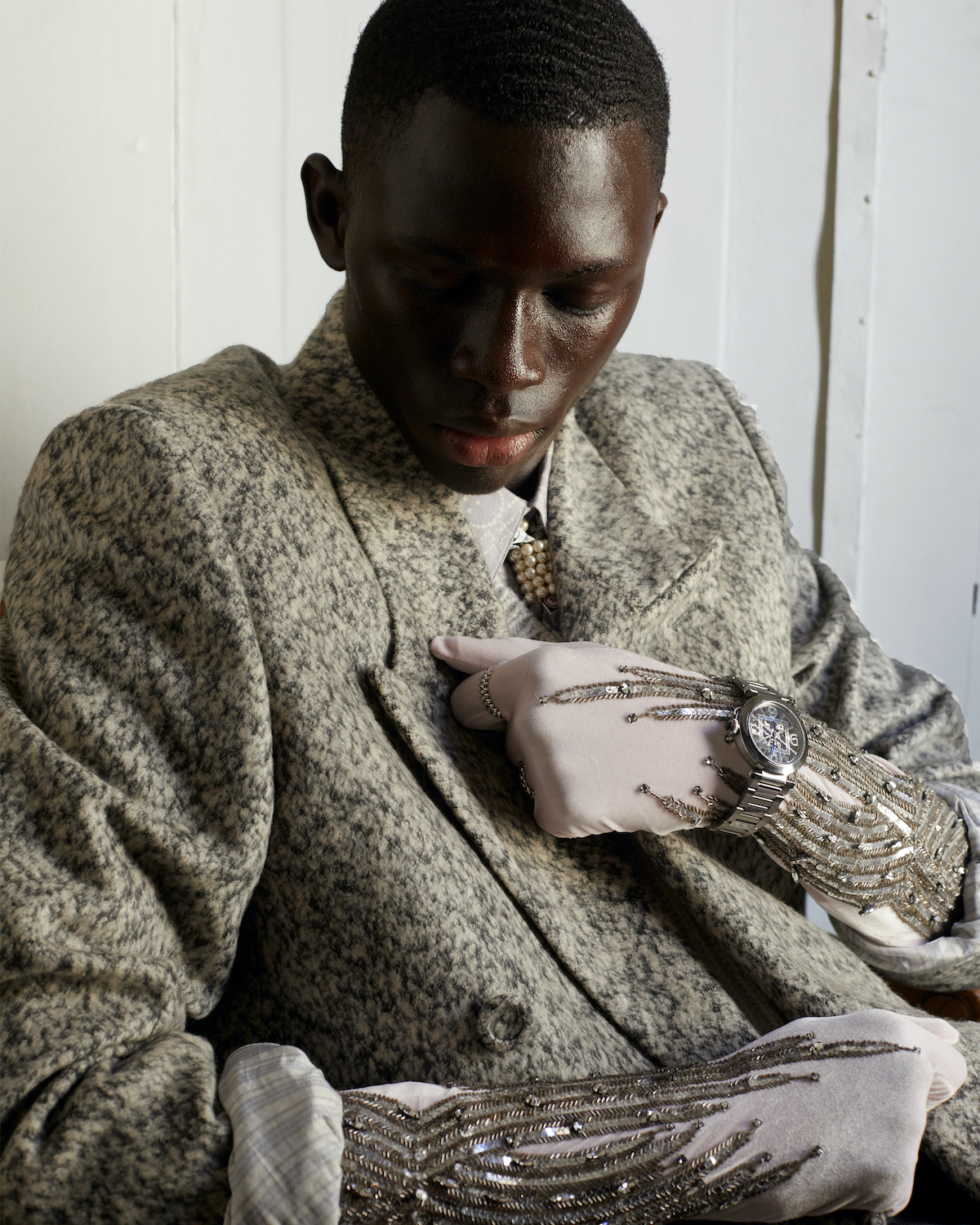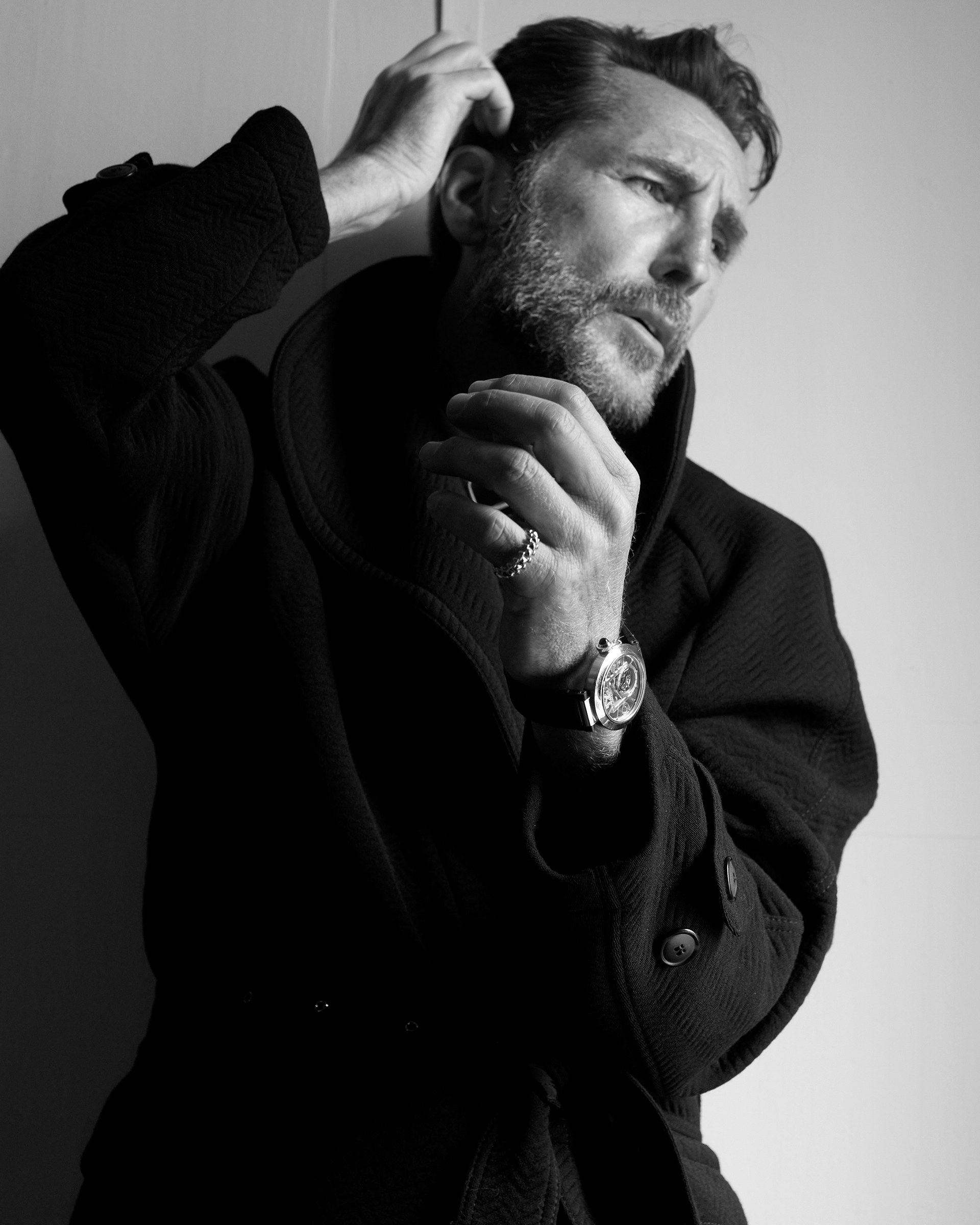Pierre Rainero Time Travels Through Cartier’s Watchmaking Legacy
The French Maison’s Image and Heritage Director speaks with VMAN’s Kevin Ponce on reinterpreting long-lasting designs while staying true to the codes of Cartier.

It’s no secret that Cartier’s first timepiece helped revolutionize the watchmaking world into what it is today. Dating back from 1875 to the present day, the impact of the French Maison in the watch realm goes beyond what defines a timepiece in today’s day and age. VMAN’s Kevin Ponce explores Cartier’s extensive archive with the brand’s Image and Heritage Director Pierre Rainero to discuss the origins of Cartier’s watchmaking legacy, the re-awakening of the newly released Pasha de Cartier, and how heritage design will never go out of style.
KP: Could you tell us a bit about the origins of watchmaking in Cartier’s history and which model kicked off the legacy?
PR: 1853 marks the starting point of Cartier watchmaking history (i.e. the Chatelaine watch crafted in 1875). Then, 1898 marks the arrival of Louis Cartier thanks to whom modern watchmaking is born around 3 principles: integrated production, development of the wristwatches, and decorative clocks. The model that kicked off this legacy is, of course, the Santos. The creation of this watch in 1904 stems from the encounter of Louis Cartier with his friend, pioneer, and aviator, Alberto Santos-Dumont.
We declare Santos as the “first modern watch” meaning it was the first watch designed to be worn on the wrist. Before the Santos watch, watches worn on the wrist were mostly feminine and consisted of a pocket watch attached to a decorating lace, cord, or chain to wrap on the wrist. Similarly, we are aware of records of soldiers wearing watches on their wrist prior to the Santos, and these were also pocket watches, modified to be able to strap them onto their arms. With Santos, Louis Cartier specifically designed the watch to integrate a bracelet, with the horns following the shape of the case, hence “the first watch designed to be worn on the wrist.”
KP: Shapes are a big component of all Cartier timepieces. When it comes to re-releases, how far is the brand willing to go when bending the rules in terms of altering the shapes of newer timepieces, while still upholding the aesthetics and legacy of the original models?
PR: We don’t bend the rules—our work is to find designs that are strong enough to give birth to variations, without altering the originals [of Louis Cartier himself]. It’s the Cartier philosophy; to interpret and rework our shapes.

KP: From the Tank, Baignoire, Tonneau, Santos, and many more, what are some elements of tradition that remain a constant in the design process of newer timepieces?
PR: Like in all other categories of objects, it’s a question of philosophy of creation and of style. We do believe in strong, perennial designs that have the ability to stick to their original idea, whilst offering different variations. Style is also a question of esthetical vocabulary. Cartier invented its own vocabulary through geometrical or expressive shapes, a sense of purity, and a sense of balance both in lines and volumes. Of course, our primary, recognized ones: roman numerals, rail tracks, blue shaped hands, and blue crown.
KP: Cartier watches are known for their overall sleekness and never truly divulged into the bulky watch trend. Is this an intentional detail that is embedded to the codes of the Maison?
PR: Cartier is into elegance, and elegance is linked to an easy and obvious comfort, perceived both by the wearer (the owner) and the viewers. Even if a watch should show a certain volume for technical constraints (i.e. waterproofness, complications), everything is done to make it well adapted to the wrist, and comfortable.
KP: For many decades now, Cartier watches have been known to be neither stereotypically masculine nor feminine—how often (if at all!) does gender come into play when creating new timepieces?
PR: For Cartier, the design leads the way, and gender comes second. Nevertheless, some watches have been specifically designed for a woman, with a jeweler’s attention to femininity (For example, Maillon de Cartier, Baignoire, etc.) In any case, every time a model is perceived as a strong, masculine statement, it’s taken and adapted immediately by women as well.

KP: After going through a period of being discontinued since its debut back in 1985, the Pasha has returned in a big way! What prompted the reawakening of this memorable timepiece? What are some updated features that we can expect?
PR: Pasha de Cartier used to be a best-seller for the Maison, reaching more than 20% of total watch sales in the 2000s. With the launch of Ballon Bleu in 2007 and its unprecedented success, the Maison decided to focus on this new round shape with its singular aesthetic and its range development. The new Pasha keeps its original proportions and codes (square in a round dial, diamond-shaped hands, screw-down crown cap attached to the case by a small chain, Clou de Paris on the bracelet, and big Arabic numerals), but definitely includes modern add-ons. A new crown, hidden under the signature, cabochon set crown cover – is also set with a blue spinel or sapphire – creating a duo of blue that adds sophistication to the watch. A visible movement via a transparent case back: the case back reveals the automatic calibre 1847 MC of the Pasha watch. A new clasp in the shape of a chain link attached to the crown that opens to reveal a hidden and secret part where initials can be engraved. A new interchangeable strap: in steel, gold, or leather, all versions can be interchanged thanks to the Cartier QuickSwitch system (patented). Discreetly located under the case, it is activated by a single push.
KP: The new Pasha watch has a slightly new sleeker bezel and band—nearly making the timepiece resemble jewelry that Cartier is also known for. What was the thought process in making these slight updates?
PR: Updates we do on our creations depend on relevance at a certain period of time. We wanted a contemporary feeling to the new Pasha de Cartier watch. The idea of balance evolves with time, and we perceive that the Pasha de Cartier watch is more balanced this way for the years to come. It’s always a challenging exercise to make a strong design evolve, while still remaining faithful to the original, and remaining relevant in the eyes of today.
KP: To me, all of Cartier’s watches carry their own personality. If you had to describe these watches in just a few words, how would you do so:
PR: Tank: “The epitome of elegance, while research for purity”
Santos: “The audacity & boldness of a pioneer”
Ballon: “Its softness and pebble shape makes it unique in the world of round watches (even the crown is included in a circle)”
Ronde as the Rotonde: “Elegant, classic, timeless”
Cle: “Crown innovation”
Tortue: “Style exercise on shapes, square and round; family geometry”
Drive: “Aesthete, Elegant, Stylish”
Baignoire: “Signature, Cult Chic”
Panthère: “Bijou, Feline, Stylish”
KP: With Cartier‘s undying legacy in the watchmaking realm, how do you see the brand evolving and keeping up with the ever-changing trends?
PR: The success of Cartier watchmaking pays tribute to the vision of Louis Cartier and his innate trust in strong designs. We believe strong designs are the best guarantee for the sustainability of creation. We apply the same philosophy to our new creations today which will hopefully be tomorrow’s classics. It’s not a question of a trend, but the feeling of relevance and of well-balanced beauty. And the idea of beauty constantly evolves. We are sticking to our own values and aiming at long-lasting designs.
Discover the new Pasha de Cartier HERE
Discover More
